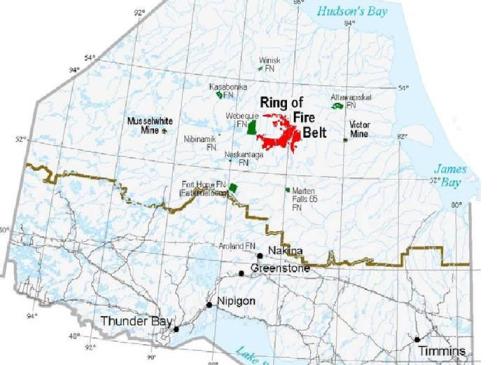press release
July 6, 2012, 8:31 a.m. EDT
SUDBURY, ONTARIO, Jul 06, 2012 (MARKETWIRE via COMTEX) — Northern Superior Resources Inc. /quotes/zigman/507849 CA:SUP -5.26% (“Northern Superior” or the “Company”) and Neskantaga First Nation (“Neskantaga”) wish to assure the Northern Superior shareholders that both the Company and Neskantaga remain committed to advancing the Ti-pa-haa-kaa-ning (TPK), New Growth and New Growth Annex gold properties within Neskantaga’s traditional territory in northwestern Ontario. This, after Northern Superior’s name inadvertently appeared on a list of Company’s slated to receive eviction notices from the “Ring of Fire” of Northwestern Ontario, by a group of First Nations (including Neskantaga) opposed to the development of a chromite deposit in that area.
Chief Peter Moonias of Neskantaga First Nation comments: “Northern Superior and Neskantaga have a long-standing tradition of working closely towards the exploration and potential development of resources in Neskantaga’s traditional territory. We regret Northern Superior’s name appearing on this eviction list. Under the current agreement we have with Northern Superior, Neskantaga looks forward to their continued progress of exploration within our Traditional Lands.”
























